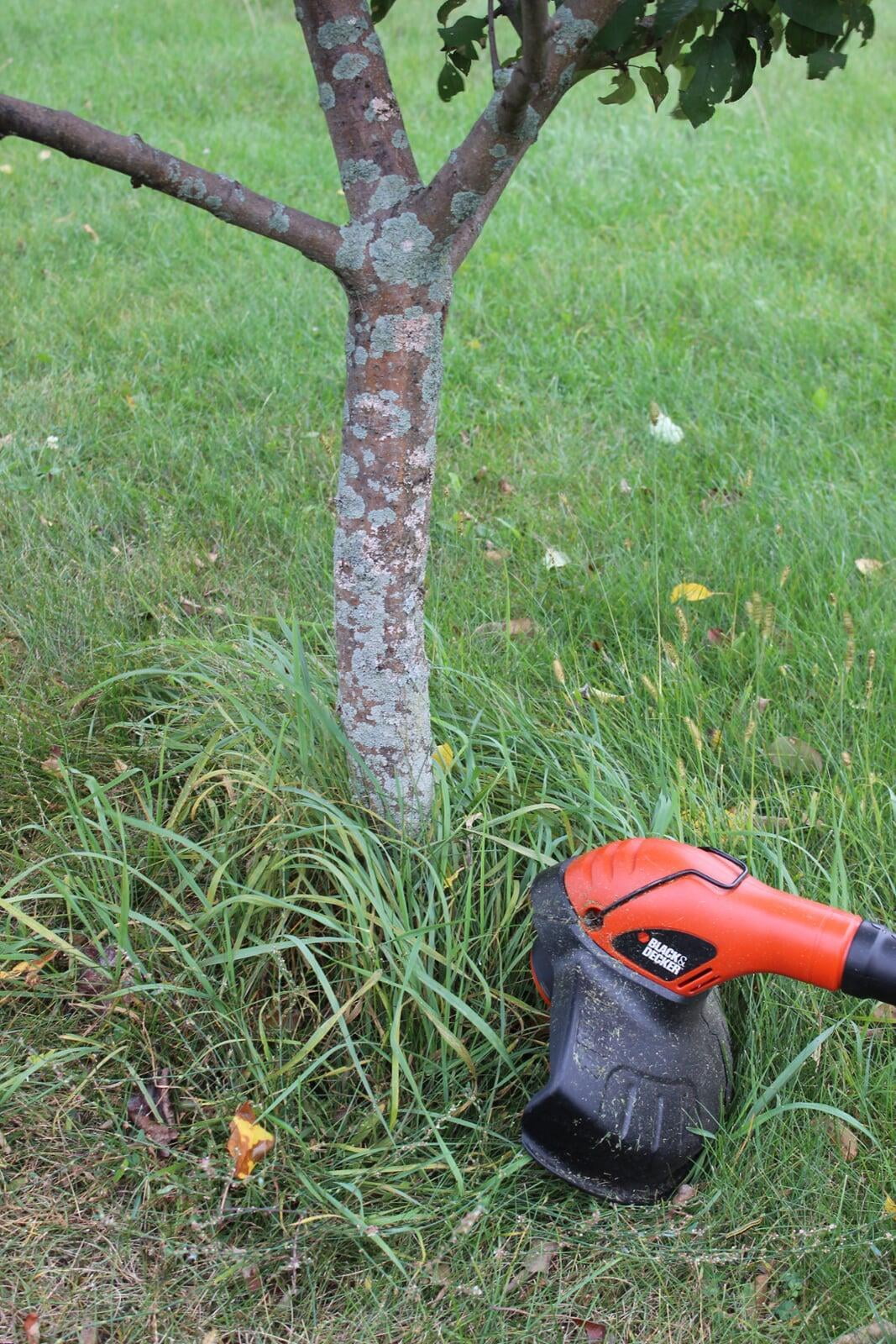The Fall Cleanup Checklist...explained
A few years ago, my inquisitive nephew wanted to help out with the fall to-do-list. We spent an afternoon doing some yard work and I showed him all of my fun yard tools and how they worked. As I taught him about the jobs that needed to be done, he constantly asked “but why?” to each of my demos. I realized afterwards that most homeowners may know what they should do when it comes to fall cleanup, but few know the real logic behind it.
Today I’m answering a few of the “but why’s” so that you will know why we do what we do when it comes to our fall outdoor yard work.
1. String trimmers (weed whackers) have always been the handy tool that lets you cut the grass in spots that you can’t easily get to with the mower. Around trees, on steep slopes or near the raised concrete paths, the string trimmer has become a staple in the garage mostly for its ease of use in problem areas. We cut this grass in the fall to ensure that insects and diseases like Rust or Mildew don't overwinter at the base of the trunk. I've seen many homeowners do a lot of damage to the bark of young trees by trying to get too close with their mowers or by hitting the trees with the high-speed twine in their trimmers. This outer layer of bark carries nutrients back and forth between root and leaf. Using a string trimmer with a proper shield guard trimmer/edger combo, which will prevent damage to the tree and be safer for the user.

2. Mower height is a big debate with a lot of lawn care maintenance companies. Some argue that shorter is better for the look of the yard while others feel that longer promotes a healthier lawn. For most of us, the best height is somewhere between 2 ½ and 3 inches. Setting your mower to 3inches in the hot summer months helps the grass from drying out, but do you know what height the last cut of the season should be? By going lower than normal, between 2 and 2 ½ inches, you can take advantage of the cold weather at night to kill off crabgrass, which is a tender annual. Also consider putting the bag back on the mower to capture the seeds from these self-seeding weeds
3. Getting the leaves off the grass is an annual right of every lawn owner. Having leaves on the grass once the snow has fallen will smother the lawn below. Not to mention that the wet leaves in the spring look terrible and are twice as hard to remove. Another less commonly known reason for removing the leaves is leaf mould. While great for decomposing matter in the composter, leaf mould is terrible for allergy sufferers. The mould spores cause an allergic reaction similar to pollen in the wet spring, causing many people to incorrectly blame the trees and flowers for their stuffed up noses.

If you’re already doing these chores, don’t stop. When a small child asks ‘But why’; you now have a little more information and won’t have to resort to the default answer of “Because it's what we've always done”.
